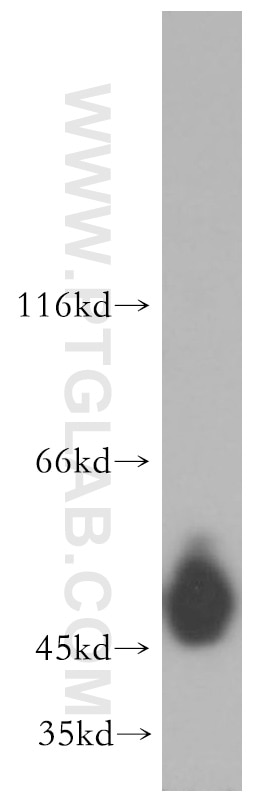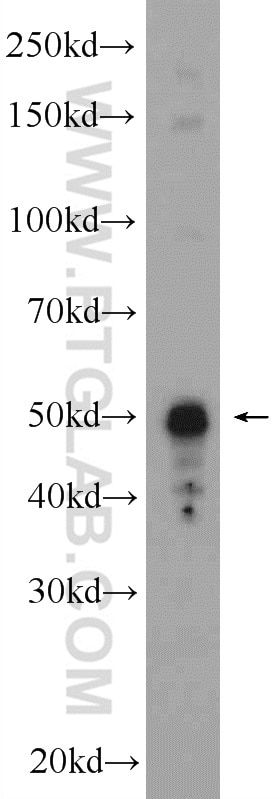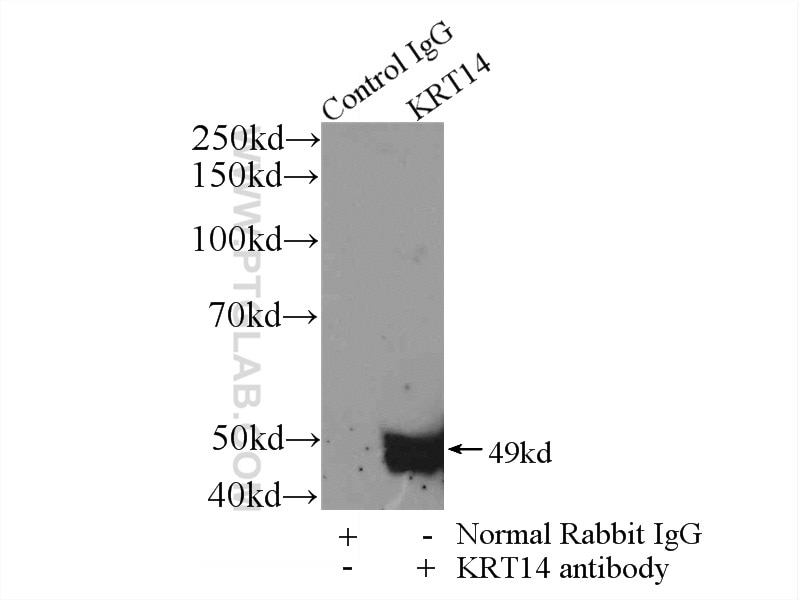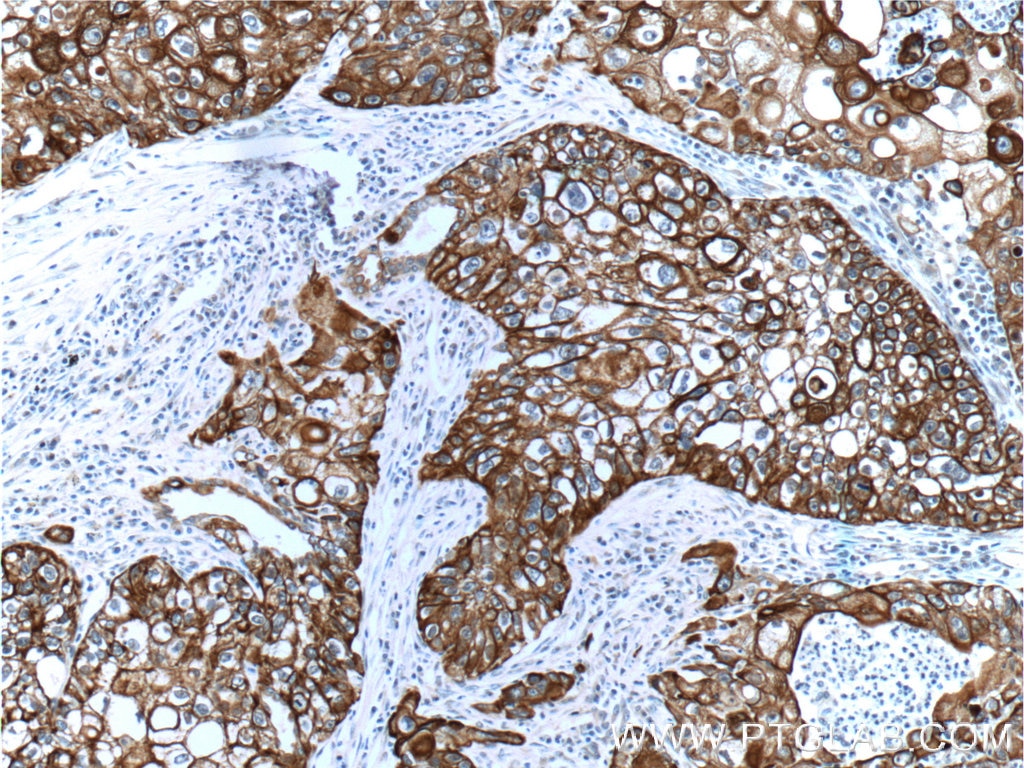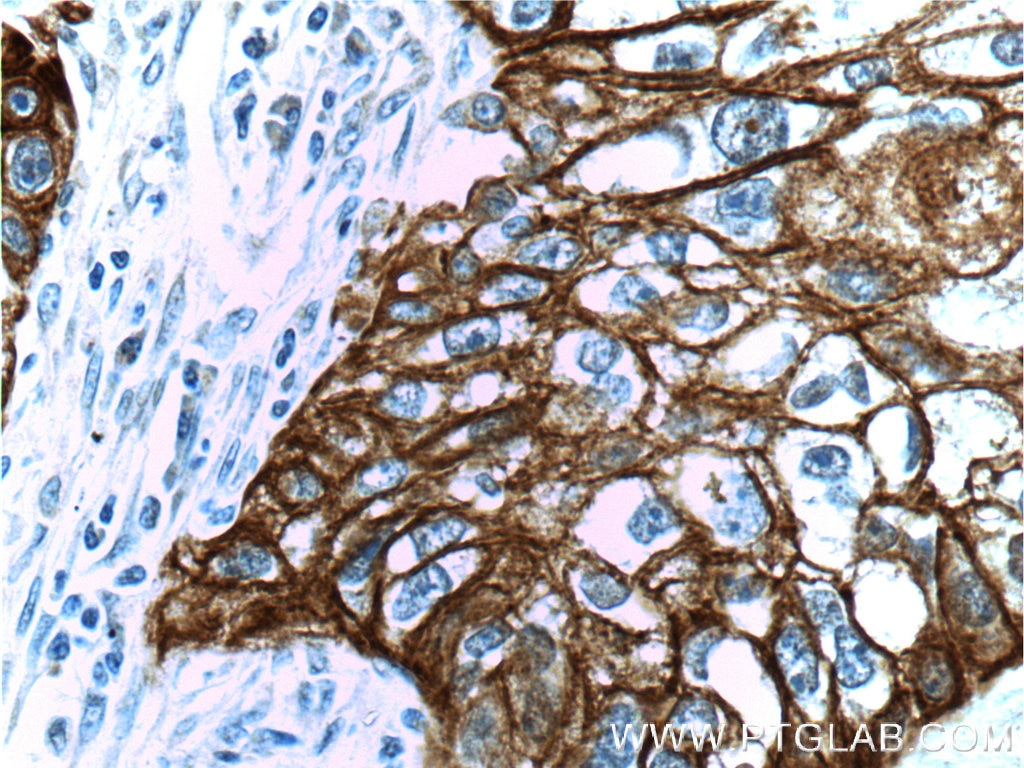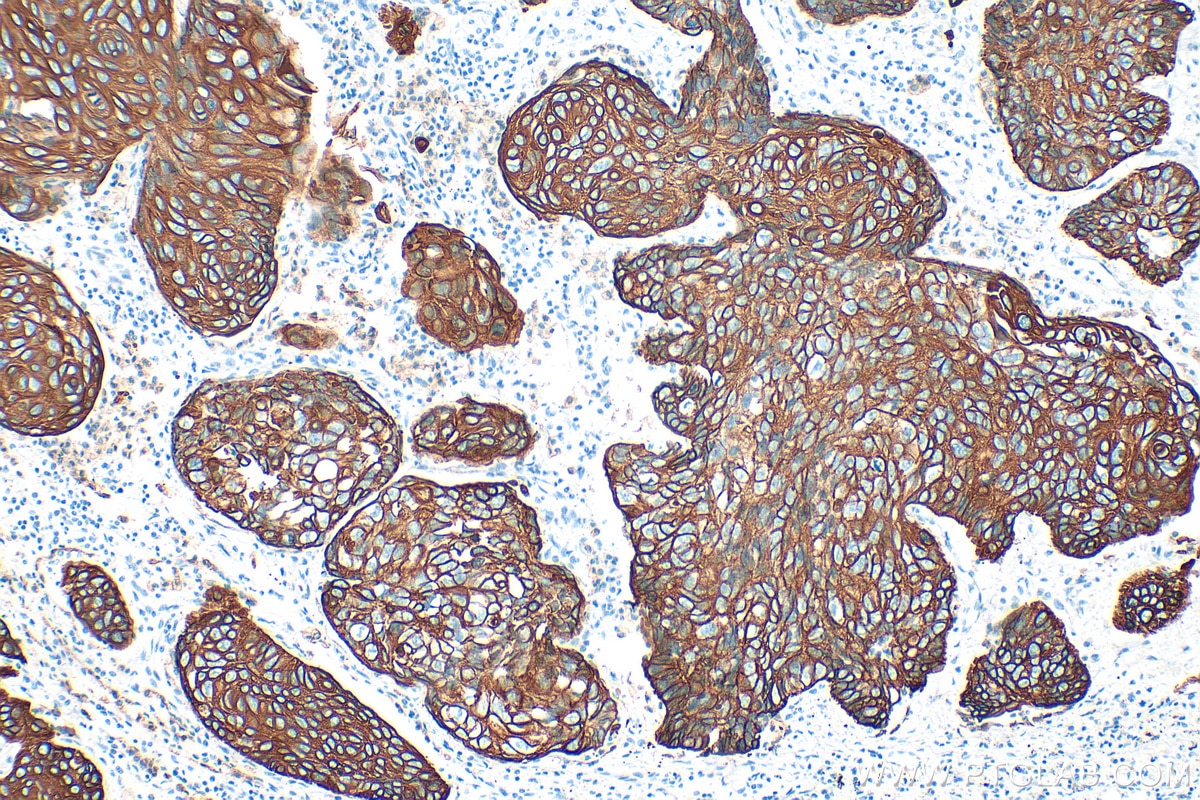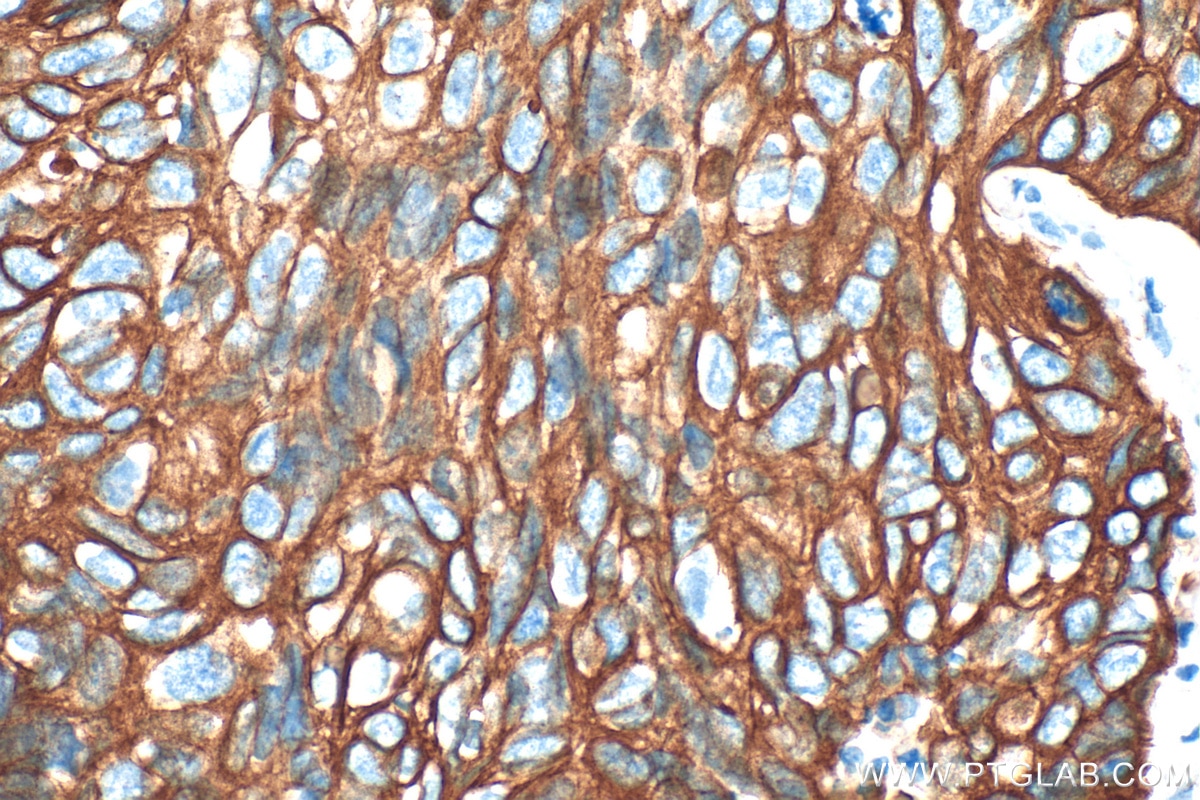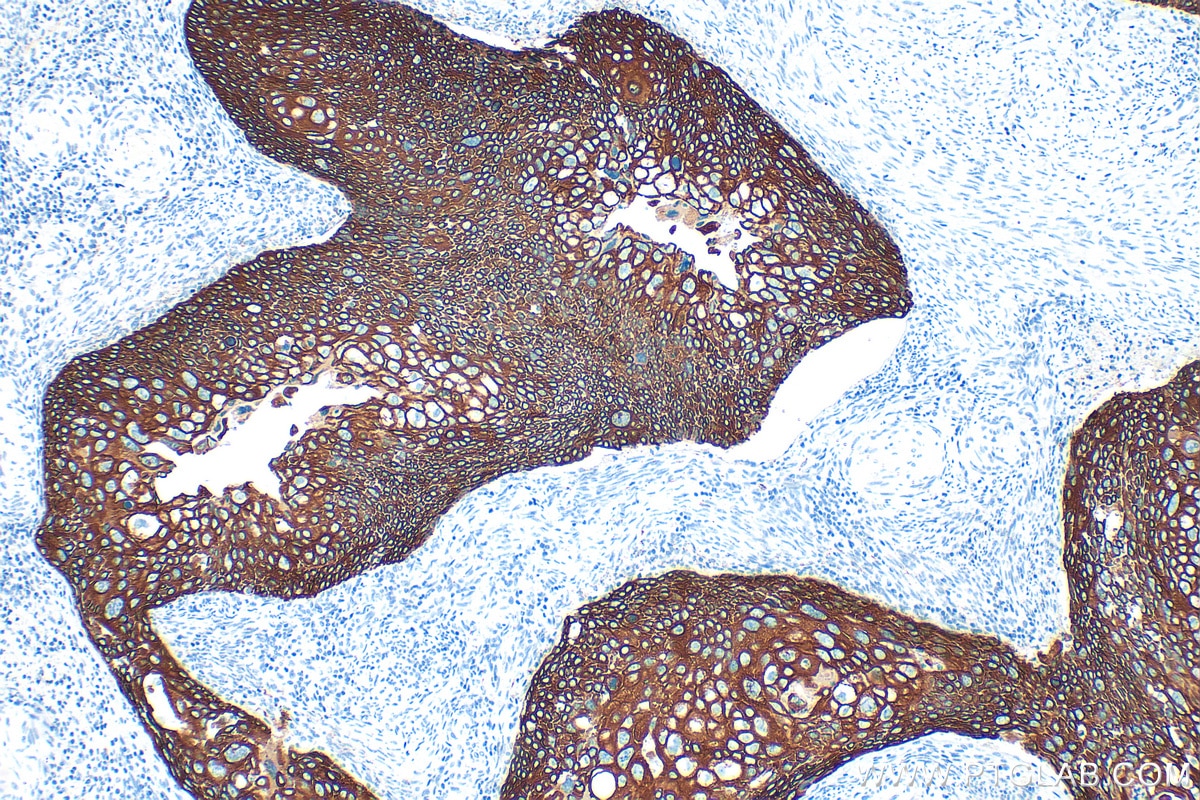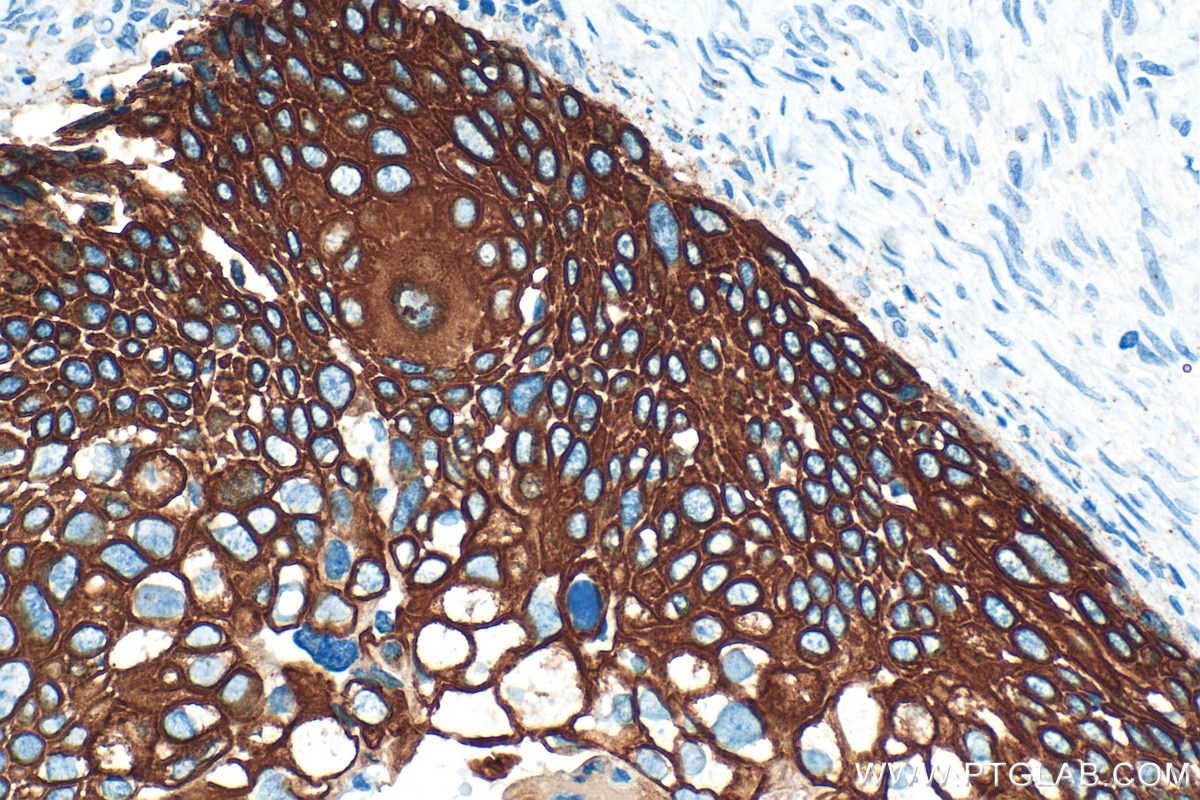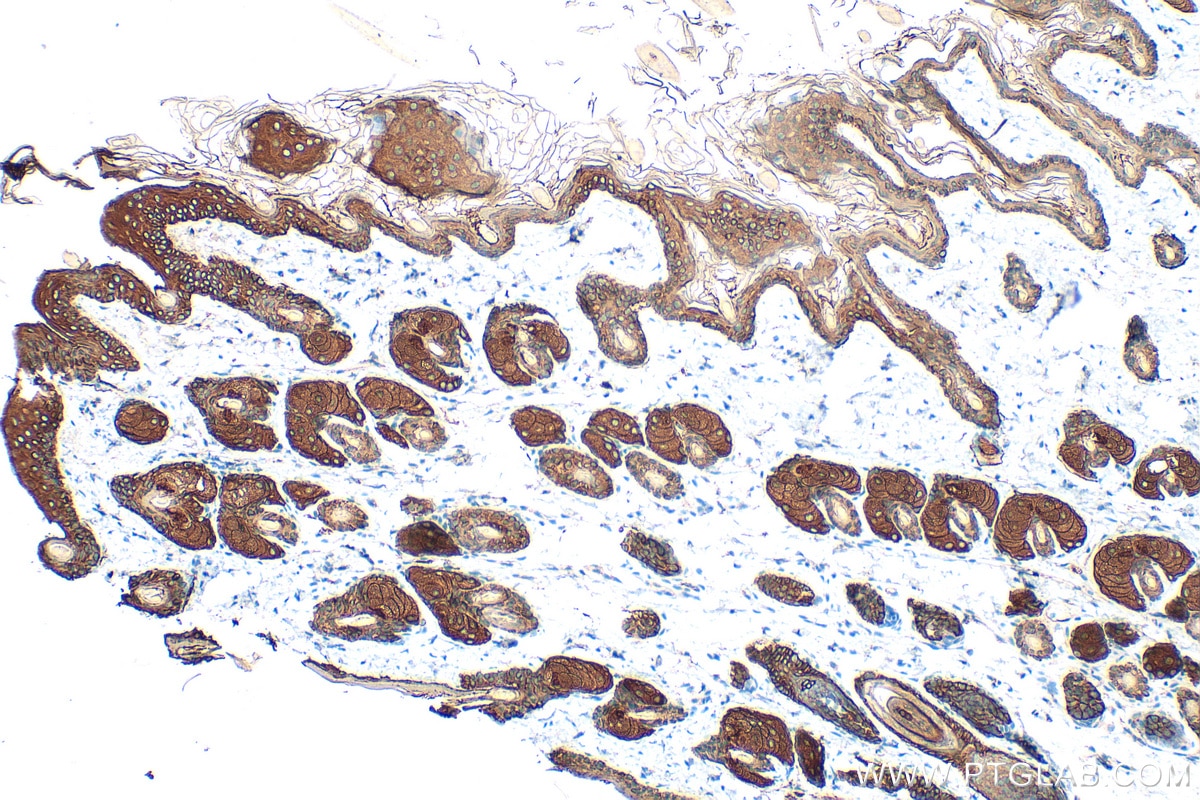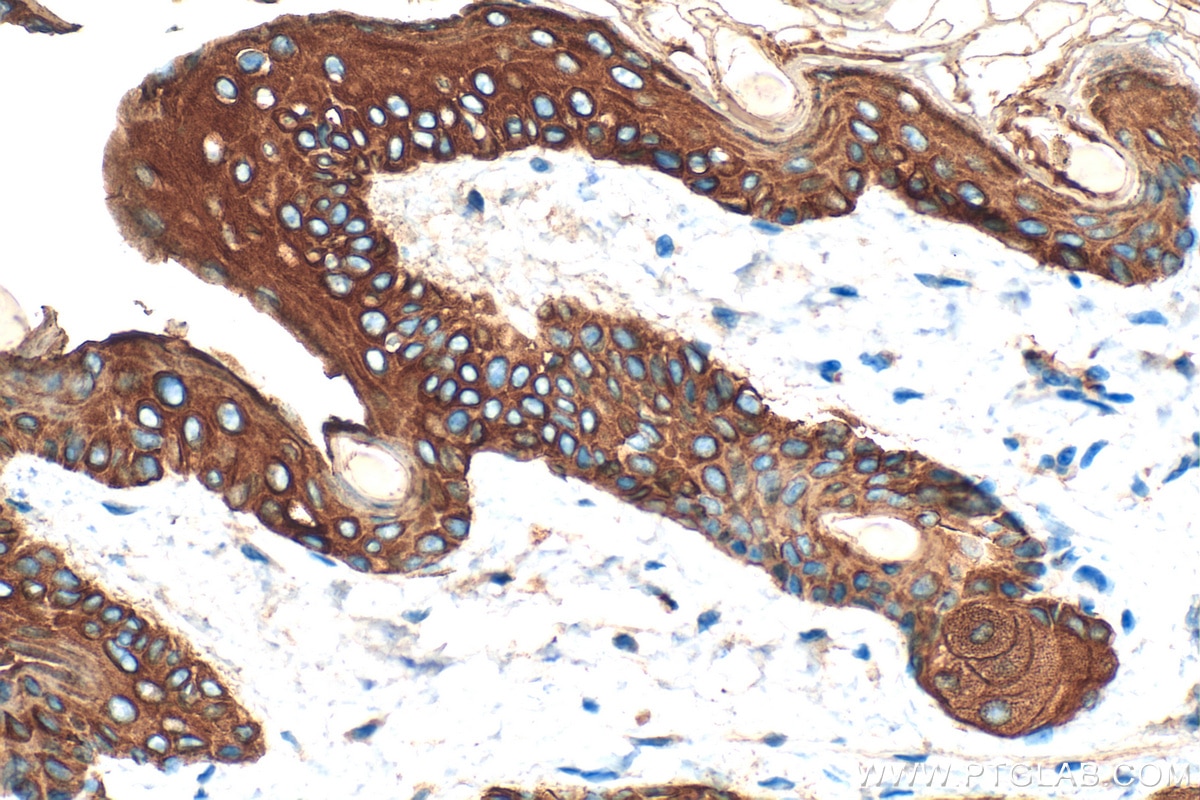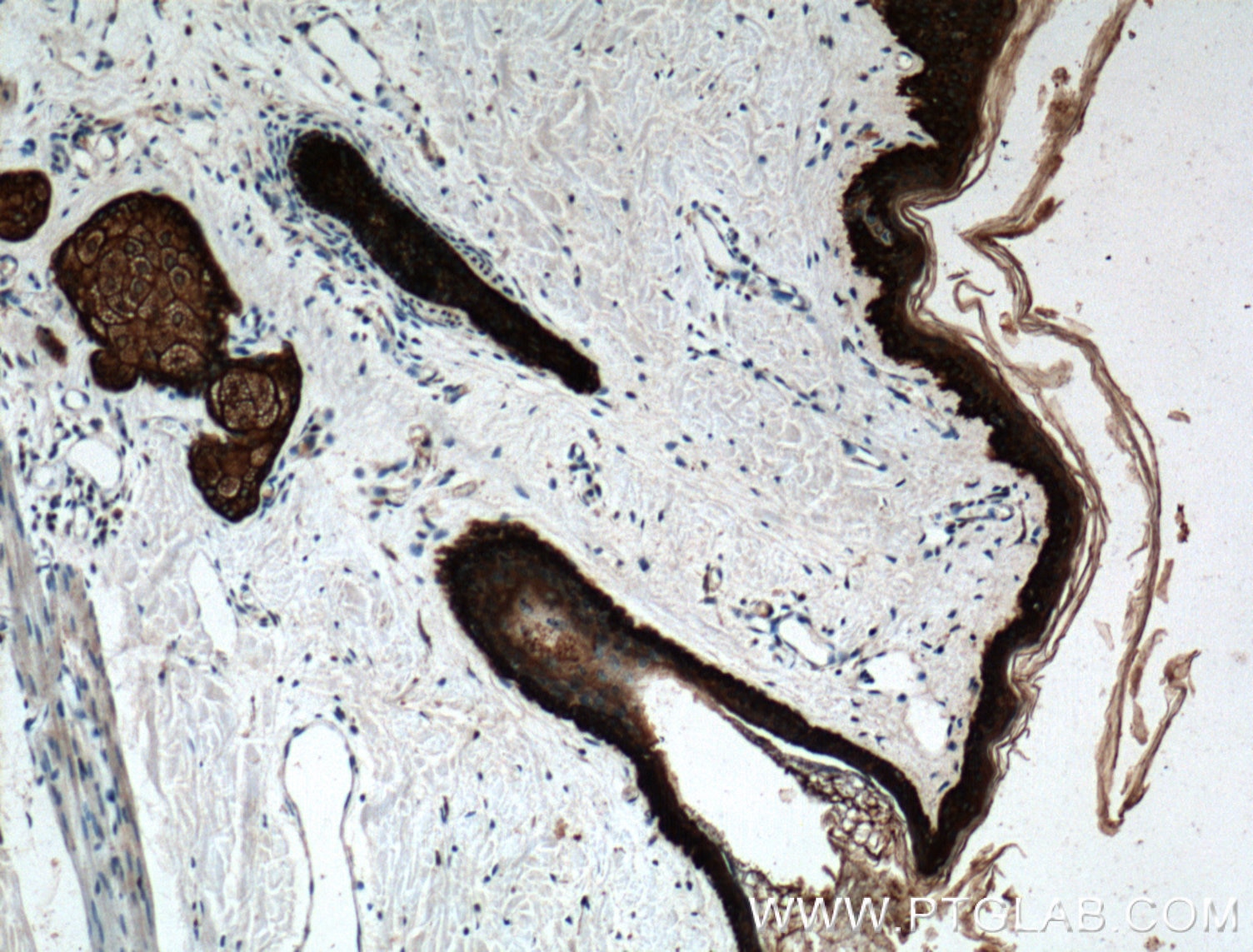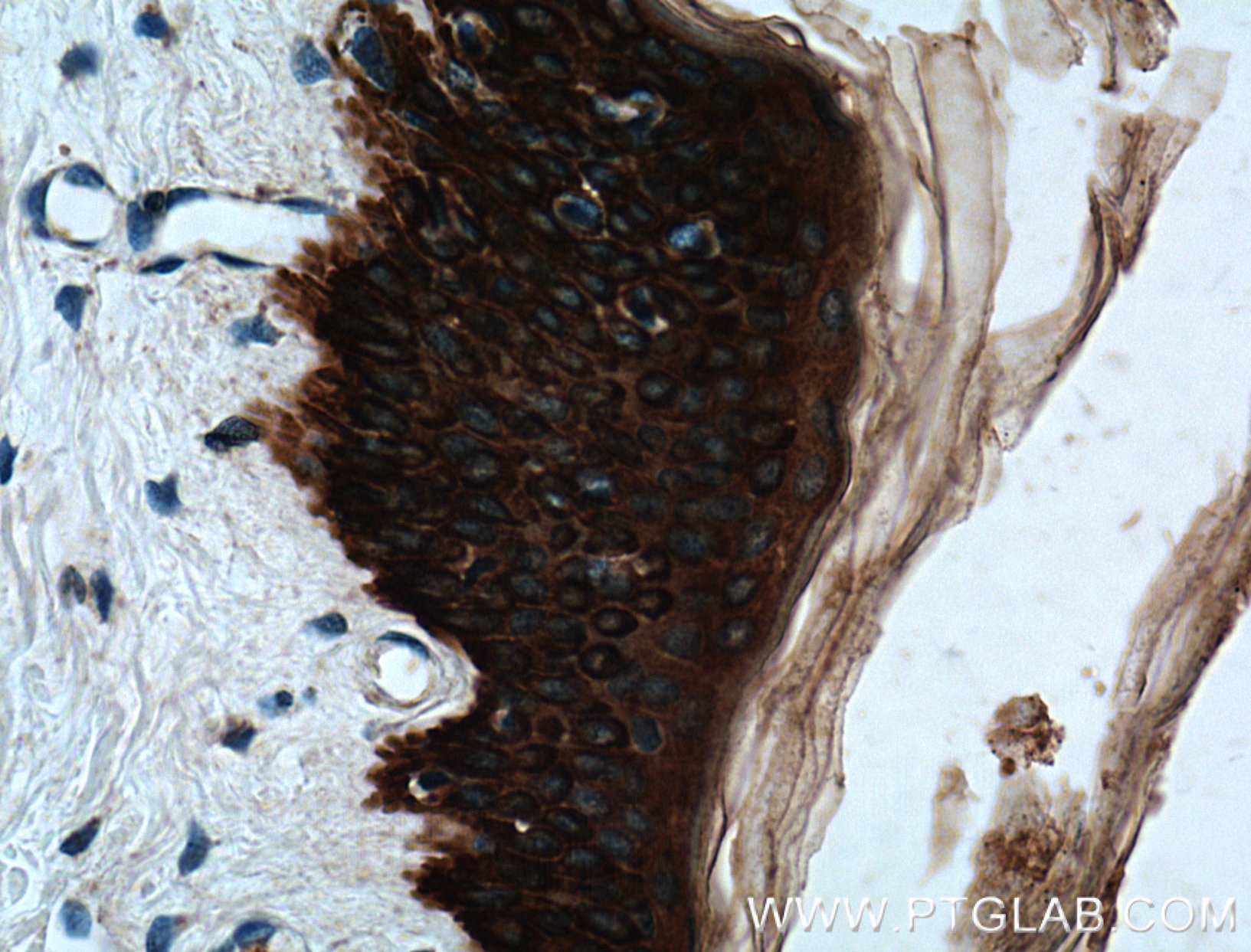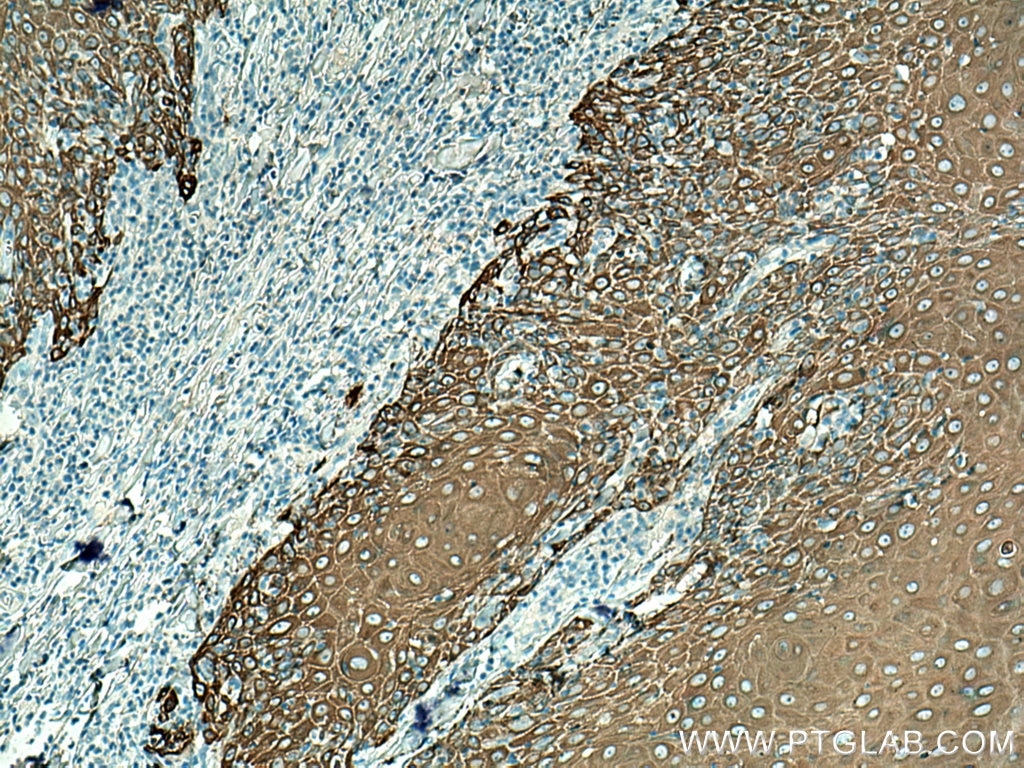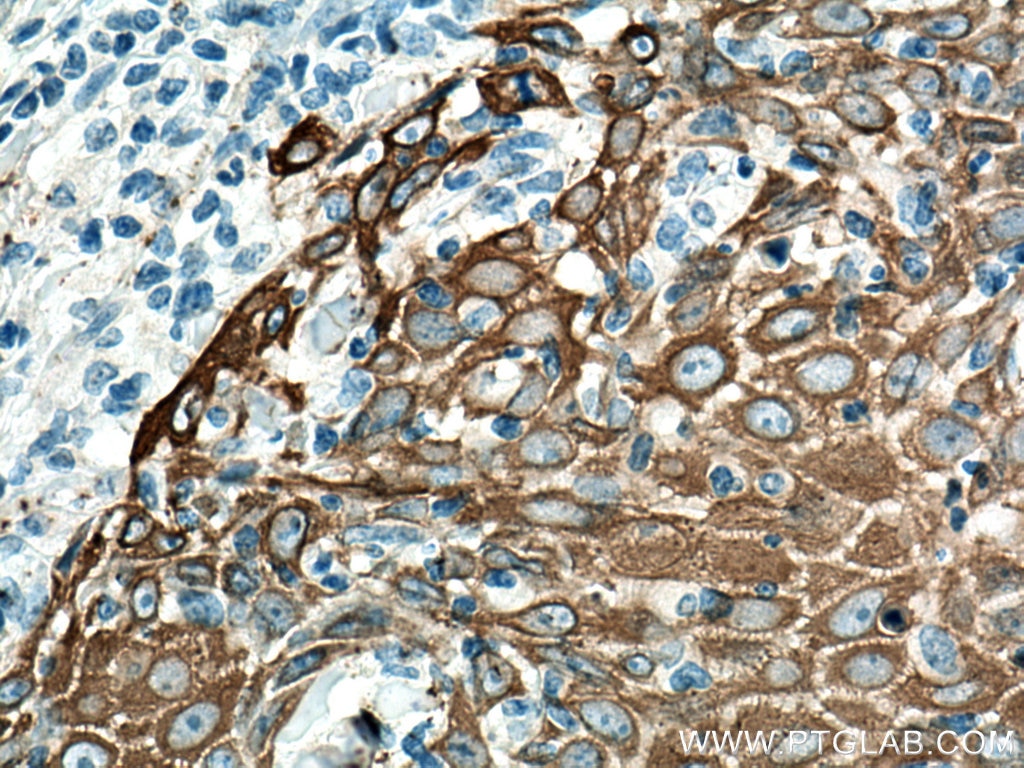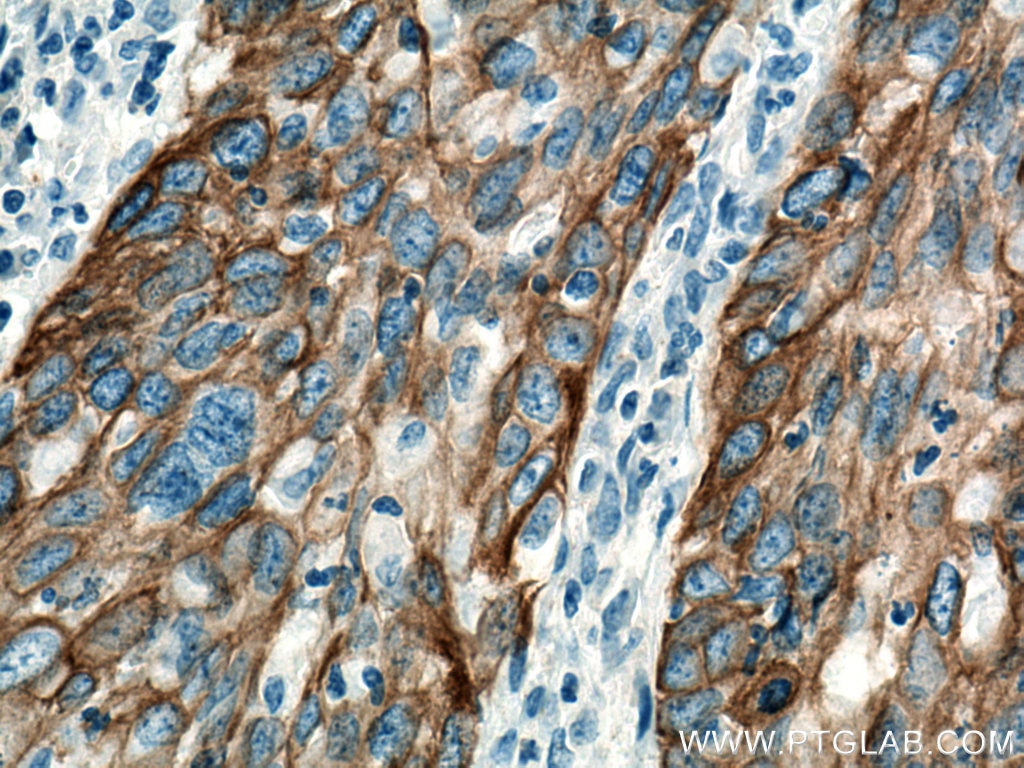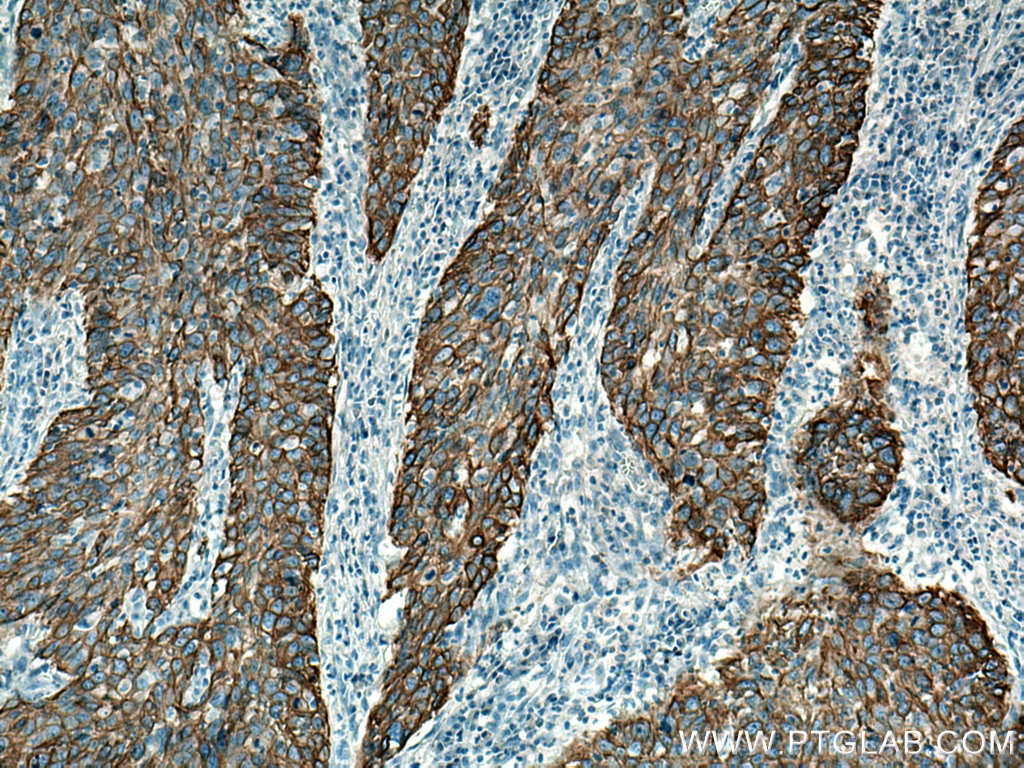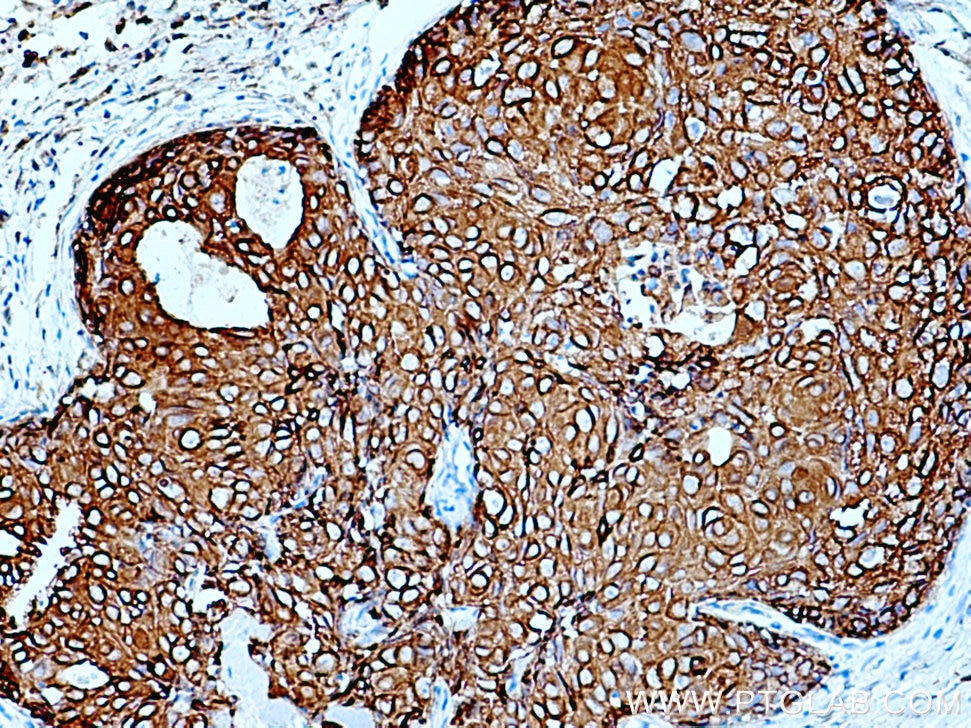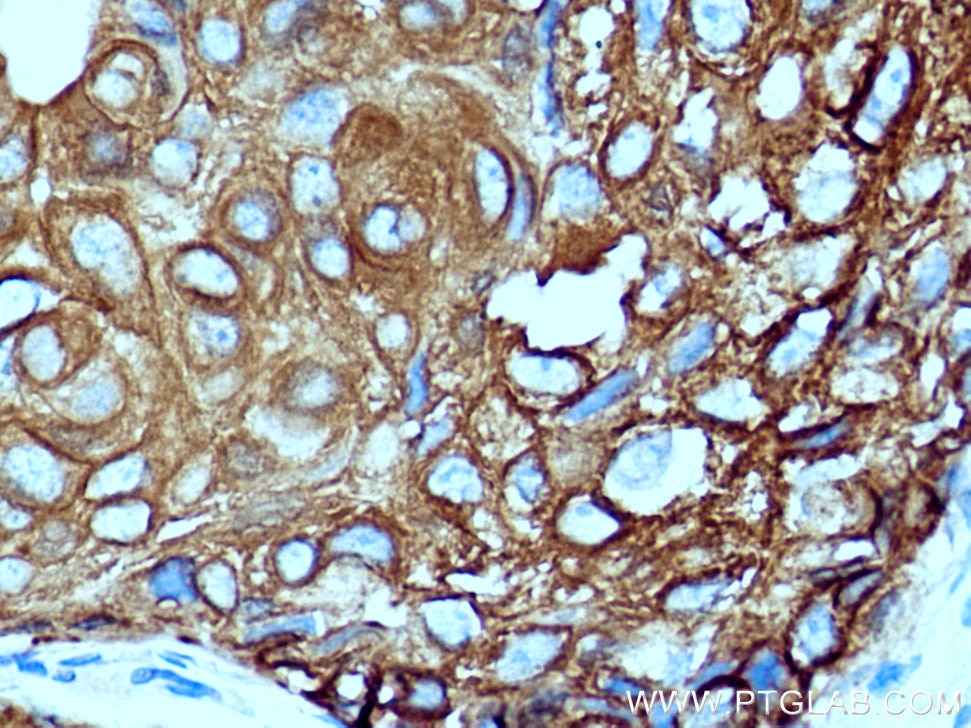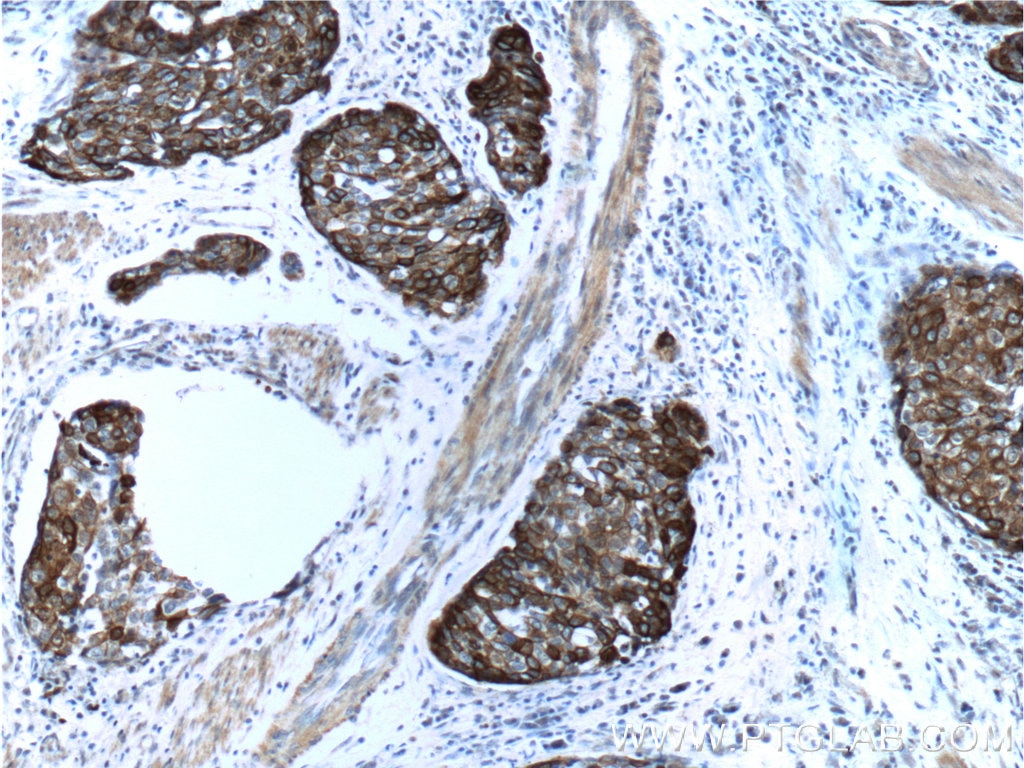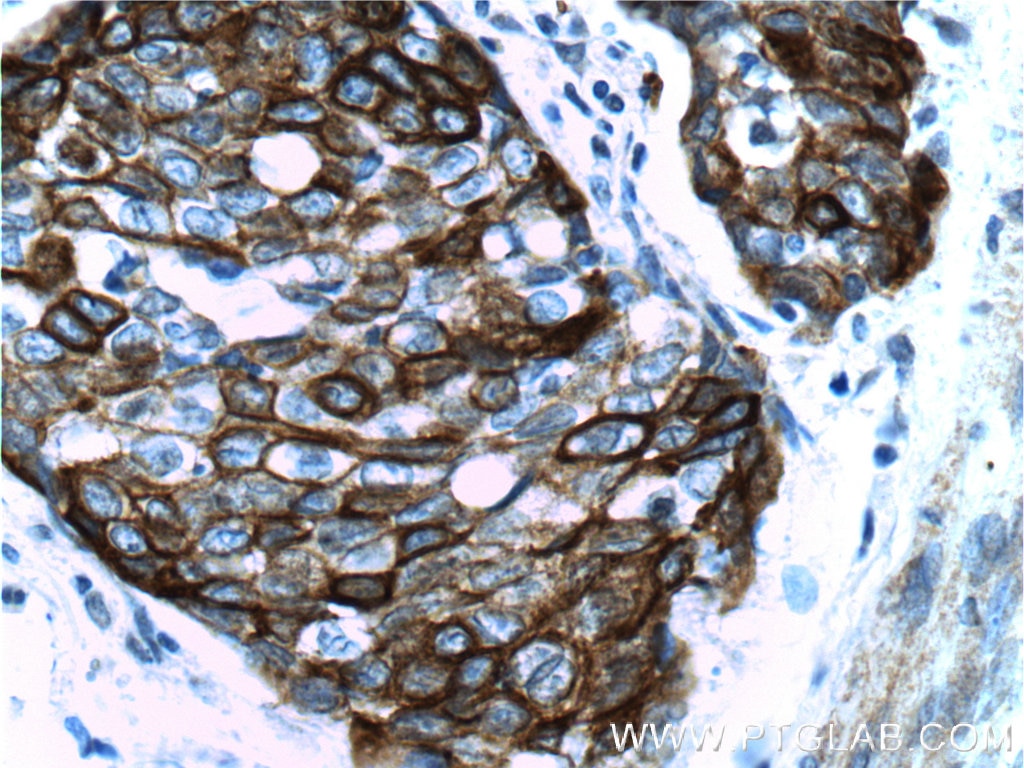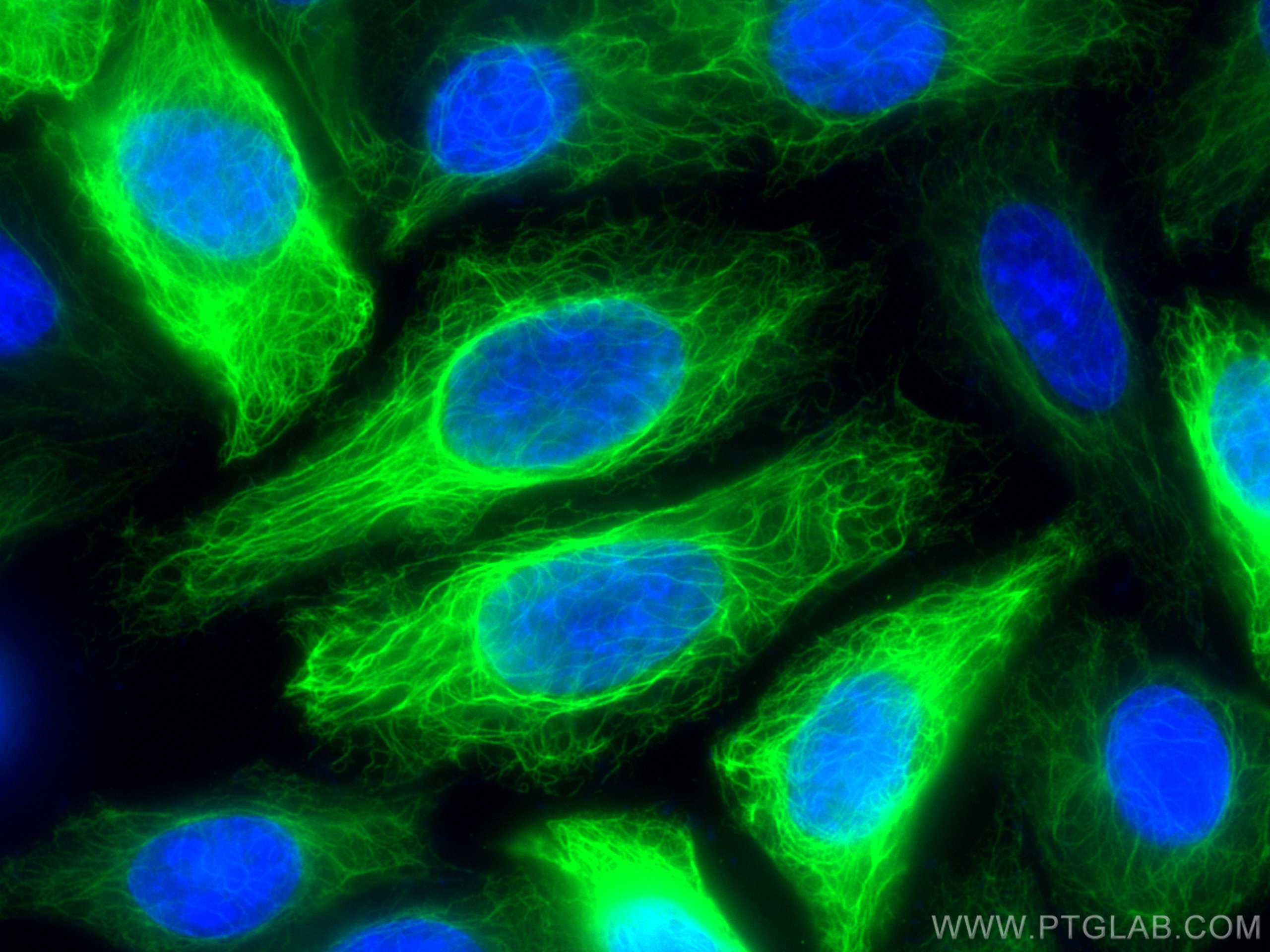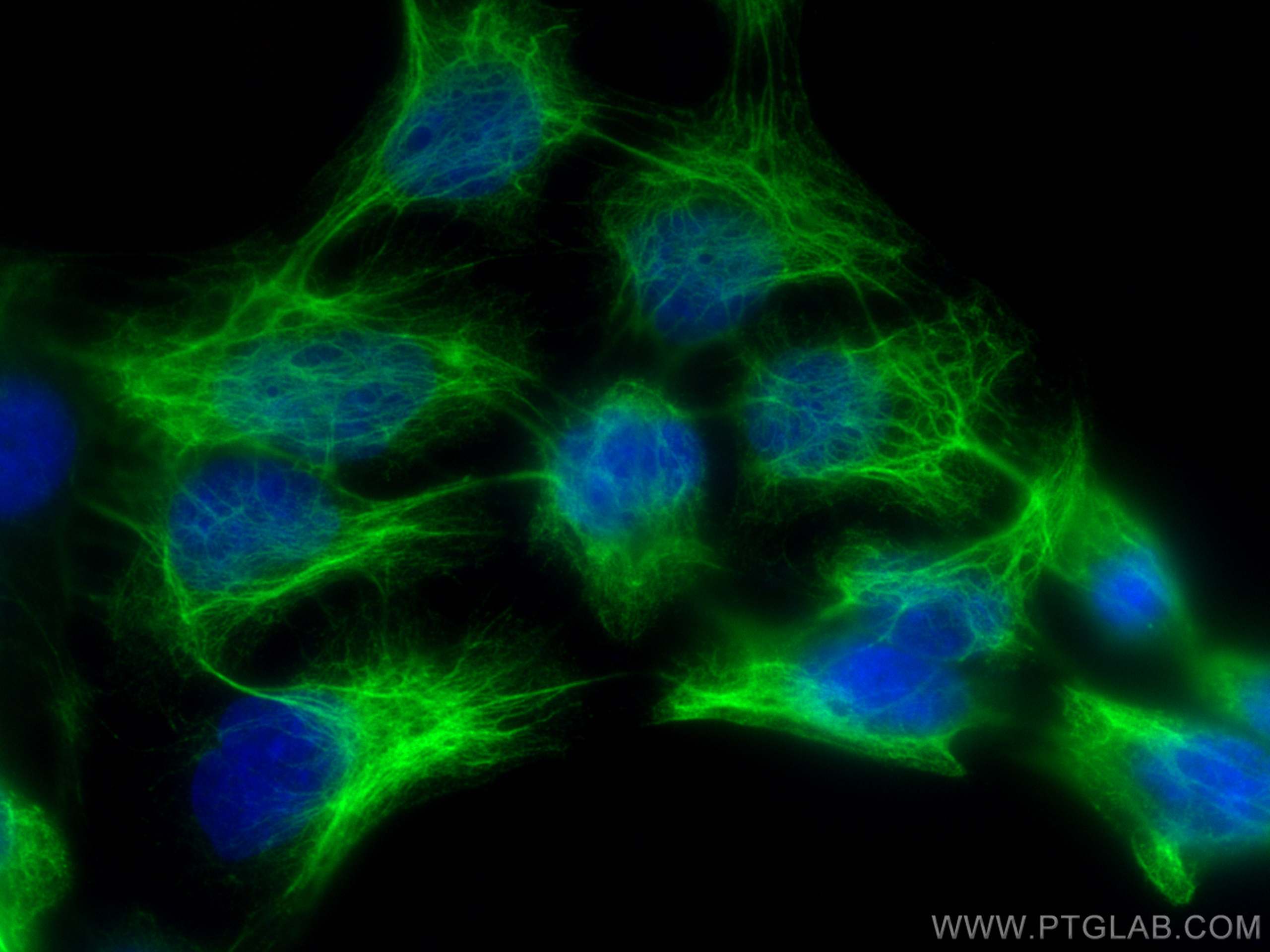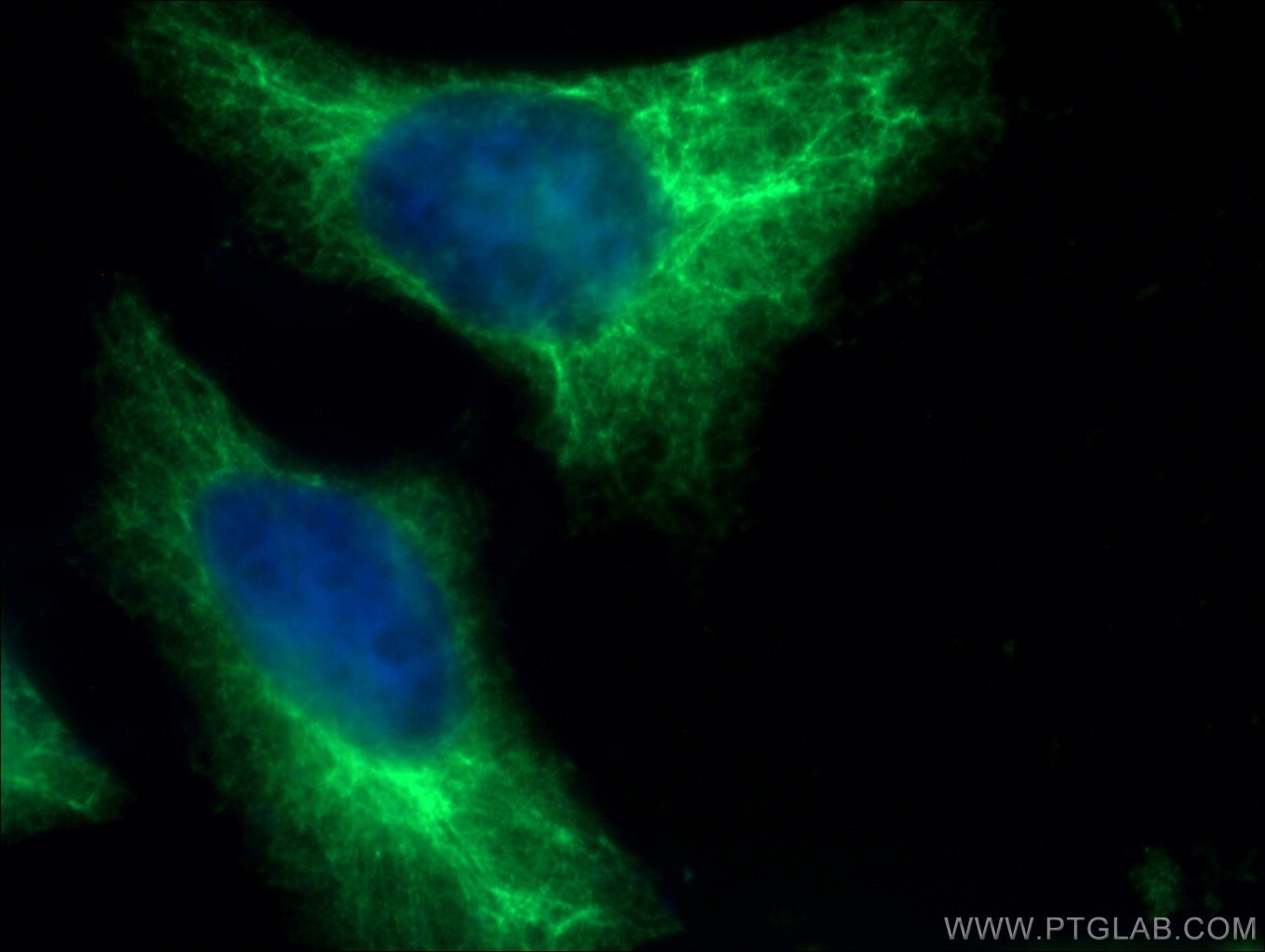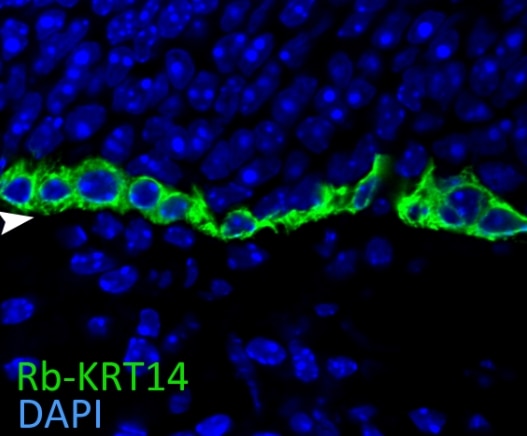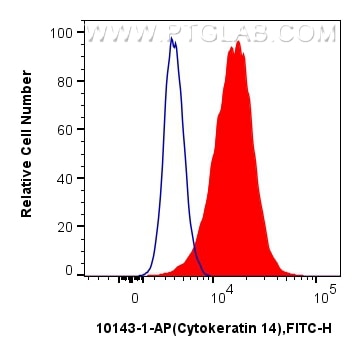- Phare
- Validé par KD/KO
Anticorps Polyclonal de lapin anti-Cytokeratin 14
Cytokeratin 14 Polyclonal Antibody for WB, IHC, IF/ICC, FC (Intra), IP, ELISA
Hôte / Isotype
Lapin / IgG
Réactivité testée
Humain, rat, souris
Applications
WB, IHC, IF/ICC, FC (Intra), IP, ELISA
Conjugaison
Non conjugué
N° de cat : 10143-1-AP
Synonymes
Galerie de données de validation
Applications testées
| Résultats positifs en WB | cellules A431, tissu cutané de rat |
| Résultats positifs en IP | cellules A431 |
| Résultats positifs en IHC | tissu de cancer du poumon humain, tissu cutané de souris, tissu cutané humain, tissu de cancer de la peau humain, tissu de cancer de l'œsophage humain, tissu de cancer du col de l'utérus humain, tissu de cancer du sein humain il est suggéré de démasquer l'antigène avec un tampon de TE buffer pH 9.0; (*) À défaut, 'le démasquage de l'antigène peut être 'effectué avec un tampon citrate pH 6,0. |
| Résultats positifs en IF/ICC | cellules HaCaT, cellules HeLa, cellules HepG2, tissu d'épithélium olfactif de souris |
| Résultats positifs en FC (Intra) | cellules A431 |
Dilution recommandée
| Application | Dilution |
|---|---|
| Western Blot (WB) | WB : 1:500-1:2000 |
| Immunoprécipitation (IP) | IP : 0.5-4.0 ug for 1.0-3.0 mg of total protein lysate |
| Immunohistochimie (IHC) | IHC : 1:20-1:200 |
| Immunofluorescence (IF)/ICC | IF/ICC : 1:200-1:800 |
| Flow Cytometry (FC) (INTRA) | FC (INTRA) : 0.40 ug per 10^6 cells in a 100 µl suspension |
| It is recommended that this reagent should be titrated in each testing system to obtain optimal results. | |
| Sample-dependent, check data in validation data gallery | |
Applications publiées
| KD/KO | See 1 publications below |
| WB | See 16 publications below |
| IHC | See 26 publications below |
| IF | See 58 publications below |
Informations sur le produit
10143-1-AP cible Cytokeratin 14 dans les applications de WB, IHC, IF/ICC, FC (Intra), IP, ELISA et montre une réactivité avec des échantillons Humain, rat, souris
| Réactivité | Humain, rat, souris |
| Réactivité citée | rat, Humain, souris |
| Hôte / Isotype | Lapin / IgG |
| Clonalité | Polyclonal |
| Type | Anticorps |
| Immunogène | Cytokeratin 14 Protéine recombinante Ag0188 |
| Nom complet | keratin 14 |
| Masse moléculaire calculée | 472 aa, 52 kDa |
| Poids moléculaire observé | 47-50 kDa |
| Numéro d’acquisition GenBank | BC002690 |
| Symbole du gène | Cytokeratin 14 |
| Identification du gène (NCBI) | 3861 |
| Conjugaison | Non conjugué |
| Forme | Liquide |
| Méthode de purification | Purification par affinité contre l'antigène |
| Tampon de stockage | PBS with 0.02% sodium azide and 50% glycerol |
| Conditions de stockage | Stocker à -20°C. Stable pendant un an après l'expédition. L'aliquotage n'est pas nécessaire pour le stockage à -20oC Les 20ul contiennent 0,1% de BSA. |
Informations générales
Keratins are a large family of proteins that form the intermediate filament cytoskeleton of epithelial cells, which are classified into two major sequence types. Type I keratins are a group of acidic intermediate filament proteins, including K9-K23, and the hair keratins Ha1-Ha8. Type II keratins are the basic or neutral courterparts to the acidic type I keratins, including K1-K8, and the hair keratins, Hb1-Hb6. Keratin 14 is a type I cytokeratin. It is usually found as a heterotetramer with keratin 5. Keratins K14 and K5 have long been considered to be biochemical markers of the stratified squamous epithelia, including epidermis.
Protocole
| Product Specific Protocols | |
|---|---|
| WB protocol for Cytokeratin 14 antibody 10143-1-AP | Download protocol |
| IHC protocol for Cytokeratin 14 antibody 10143-1-AP | Download protocol |
| IF protocol for Cytokeratin 14 antibody 10143-1-AP | Download protocol |
| IP protocol for Cytokeratin 14 antibody 10143-1-AP | Download protocol |
| Standard Protocols | |
|---|---|
| Click here to view our Standard Protocols |
Publications
| Species | Application | Title |
|---|---|---|
Cell Stem Cell Injury Induces Endogenous Reprogramming and Dedifferentiation of Neuronal Progenitors to Multipotency. | ||
Adv Sci (Weinh) Photothermal-Responsive Soluble Microneedle Patches for Meibomian Gland Dysfunction Therapy | ||
Nat Commun Malfunction of airway basal stem cells plays a crucial role in pathophysiology of tracheobronchopathia osteoplastica. | ||
Nat Commun Human induced pluripotent stem cell-derived vocal fold mucosa mimics development and responses to smoke exposure. | ||
Biomaterials MSC-derived exosomes protect against oxidative stress-induced skin injury via adaptive regulation of the NRF2 defense system. | ||
Oncogene EB-virus latent membrane protein 1 potentiates the stemness of nasopharyngeal carcinoma via preferential activation of PI3K/AKT pathway by a positive feedback loop. |
Avis
The reviews below have been submitted by verified Proteintech customers who received an incentive for providing their feedback.
FH Rachel (Verified Customer) (03-19-2024) | Excellent antibody, got the tester but will be purchasing more for future work.
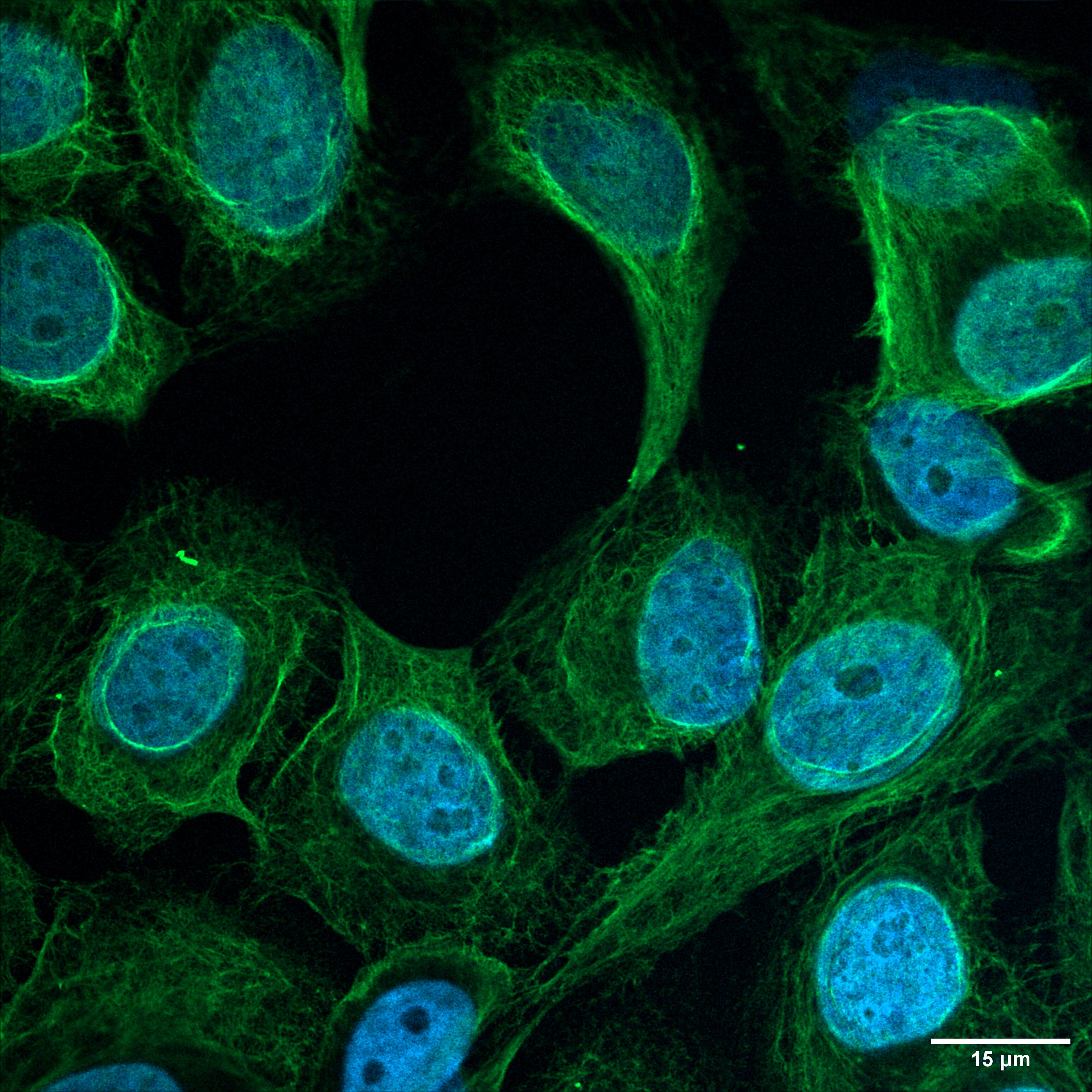 |
FH Parmveer (Verified Customer) (10-20-2019) | Worked well to detect basal cells around the prostate gland of formalin fixed tissue
 |
FH Joshua (Verified Customer) (05-10-2019) | Human Keratinocytes fixed in 4% paraformaldehyde and stained for KRT14. Goat anti-rabbit 488. Bright, specific staining observed.
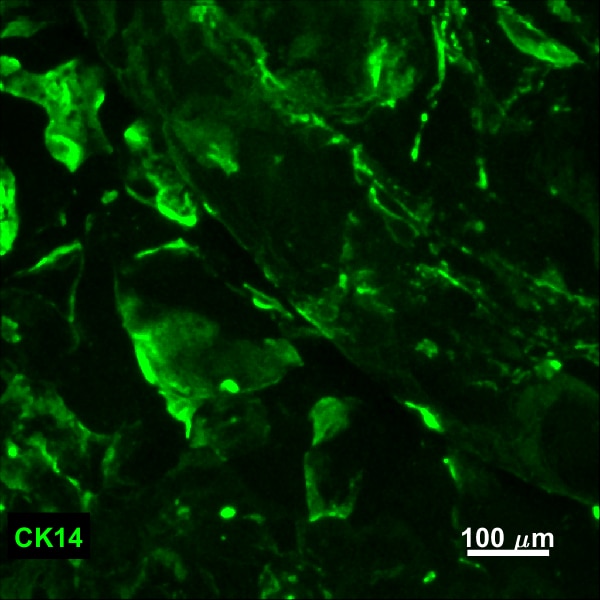 |
